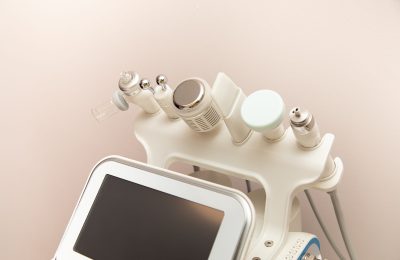Driven by a facilitated digitization of the world around us, the spa industry is currently evolving with advanced technologies in…
Corneotherapy: provides a first line of defence against the signs of aging
Clients searching for the fountain of youth are nothing new to the aesthetics industry. Not surprisingly, anti-aging products and services make up a big part of the market. For corneotherapists, the pursuit of instant results and the proliferation of band-aid solutions far too often come at the cost of overlooking skin health.
Corneotherapy uses preventative interventions to correct and restore the stratum corneum and barrier defence systems as the first and most important phase of any skincare routine. It’s an approach that leads to homeostasis and improved function of the entire skin, protecting it against harmful substances and micro-organisms while keeping the epidermis intact. It’s seen as a primary measure against skin-aging conditions, as well as skin barrier and cornification disorders such as essential fatty acid deficiency, xerosis, ichthyosis, and eczema.
As the International Association for Applied Corneotherapy (IAC) notes, “Corneotherapy is an innovative and progressive skin treatment methodology that has proven it is possible to achieve healthy skin with an optimally functioning innate immune system by preventing or reducing structural inflammation.”
The term corneotherapy was first defined by the American dermatologist Albert Kligman in the mid-1960s. He and his associates demonstrated that substantial clinical effects could be achieved by treating the disturbed balance of the skin through the repeated application of substances that had humectant and emollient properties. With repeated application, these moisturizers showed improvement to common skin barrier and cornification disorders like atopic dermatitis and dermatoses.
Understanding the underlying causes of certain skin conditions leads to better and sustainable long-term solutions for clients. And, while establishing healthy skin takes priority over the aesthetic look, being able to balance both is ideal.
Accordingly, a first step is a comprehensive skin analysis to understand the client’s genetic history and any influences that may bear on their skin — along with medical, nutritional, and lifestyle information that can shed light on their skin condition. This analysis also gives clues to the treatment pathways best suited for that client.
As a starting point in a skincare plan, this analysis helps set the baseline and can help manage client expectations. The approach is also important because it establishes who’s responsible for different components of the plan, and clarifies how long and how many treatments it will take for the client to see results.
In corneotherapy, the first phase of any skincare treatment lies in the restoration of the client’s skin barrier function. If the skin barrier is not fully functioning, treatments will not produce optimal results. It has been shown that with every cell membrane of the epidermis functioning well, products and treatments work more effectively and deliver better results. Protecting the epidermis at all times is a core tenet of corneotherapy.
According to the IAC, “By using methodologies that are primarily directed to correcting and building skin barrier defenses that have been rendered defective or impaired by disease, or intrinsic and extrinsic factors, corneotherapy is the individualized skincare and clinical treatment methodology of the future, as it can be perfectly adapted to the specific needs of the skin.”
The skin’s fibroblasts need vitamins A, C, and E in order to synthesize collagen, elastin, and glycosaminoglycans, but the stability of these ingredients can be problematic, and, with topical applications, clients can experience some negative effects. Advanced skincare products where the ingredients are encapsulated in liposomes or nanoparticles to protect their potency ensure optimal delivery to the target cells. Other ingredients that aid in boosting a healthy barrier in skin and target the aging process include epigallocatechin gallate (a potent antioxidant) and Boswellia serrata (frankincense) extract.
For clients who want to avoid long downtimes or painful procedures, interventions like routine facials, collagen induction therapy (dermal needling), microcurrent light-emitting diode therapy, and intense pulsed light (IPL) offer a less invasive first step and help the skin function optimally.
Skincare professionals must stay up to date with trends, be able to identify fads from facts, and inform their clients with proven data so they can make informed decisions about the products they use and the treatments they receive.
Gone are the days when clients simply took our word for recommendations. The fact is, consumers are knowledgeable about their skin and products’ ingredients these days. Aestheticians must be able to substantiate their recommendations with scientific evidence, not only for the products they recommend but also for the treatments they suggest. While clients want fast results, skincare professionals know there’s no quick fix. Better treatment outcomes start with heathy skin.




